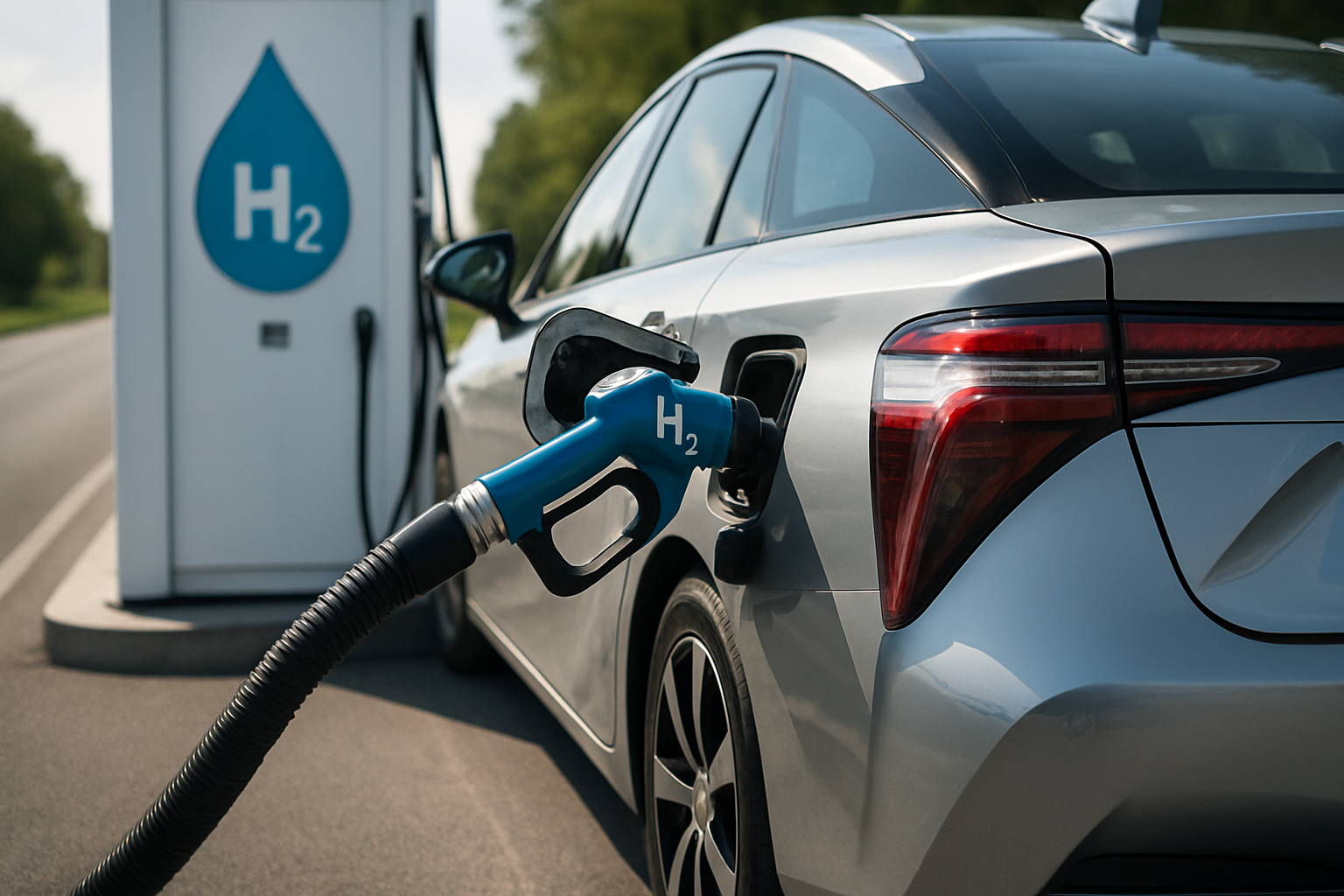Hydrogen Fuel Cells: The Unsung Hero of Automotive Innovation
Picture yourself behind the wheel of a car that emits nothing but water vapor, refuels in minutes, and offers a range rivaling traditional gasoline vehicles. This isn't science fiction—it's the promise of hydrogen fuel cell technology. As the automotive world grapples with environmental concerns and the search for sustainable alternatives, hydrogen fuel cells emerge as a compelling, yet often overlooked, solution. Let's dive into the world of this transformative technology and explore its potential to reshape our roads.

A Historical Journey: From Space to the Streets
The concept of fuel cells dates back to 1838 when Welsh physicist William Grove first demonstrated the technology. However, it wasn’t until the 1960s that fuel cells gained significant attention, thanks to NASA’s use of them in the Gemini and Apollo space missions. The automotive industry began seriously exploring fuel cell vehicles (FCVs) in the 1990s, with major manufacturers like General Motors, Honda, and Toyota investing heavily in research and development. The first commercially available FCV, the Honda FCX Clarity, hit the market in 2008, marking a milestone in automotive history.
Performance and Practicality: Breaking Down the Benefits
Hydrogen fuel cell vehicles offer several advantages over their battery-electric counterparts. First and foremost is refueling time—FCVs can be refilled in a matter of minutes, similar to conventional gasoline vehicles, addressing one of the main concerns with battery electric vehicles (BEVs). Additionally, FCVs typically offer greater range, with some models capable of traveling over 400 miles on a single tank of hydrogen. This makes them particularly attractive for long-distance driving and commercial applications.
Infrastructure Challenges: The Road Less Traveled
Despite their potential, FCVs face significant hurdles, primarily in the form of infrastructure limitations. As of 2023, there are only a handful of hydrogen fueling stations available to the public in most countries, with the majority concentrated in California, Japan, and parts of Europe. This chicken-and-egg problem—lack of infrastructure discouraging vehicle adoption, and low vehicle numbers discouraging infrastructure investment—remains a major obstacle to widespread FCV adoption.
Manufacturing and Cost Considerations: Scaling the Summit
The production of fuel cells and hydrogen itself presents another challenge. Currently, most hydrogen is produced through steam methane reforming, a process that, while efficient, still relies on fossil fuels. Green hydrogen, produced through electrolysis powered by renewable energy, offers a truly zero-emission solution but is currently more expensive. Additionally, the use of precious metals like platinum in fuel cell catalysts contributes to higher production costs. However, ongoing research into alternative catalysts and more efficient production methods shows promise in reducing these costs over time.
Environmental Impact: A Holistic View
While FCVs produce zero tailpipe emissions, it’s crucial to consider the entire lifecycle environmental impact. The method of hydrogen production plays a significant role in the overall emissions profile of FCVs. If hydrogen is produced using renewable energy, the environmental benefits are substantial. However, if fossil fuels are used in the production process, the advantages over conventional vehicles diminish. This underscores the importance of developing green hydrogen production methods alongside FCV technology.
The Role of Policy and Government Support
Government policies and incentives have played a crucial role in the development and adoption of FCVs. Countries like Japan, South Korea, and Germany have implemented ambitious strategies to promote hydrogen technology, including subsidies for vehicle purchases and investment in infrastructure. In the United States, California has been at the forefront of FCV adoption, offering rebates and funding for hydrogen fueling stations. As climate change concerns intensify, more governments may look to hydrogen as part of their clean energy strategies, potentially accelerating FCV development and adoption.
Industry Collaboration: Paving the Way Forward
Recognizing the challenges and potential of hydrogen fuel cell technology, many automotive manufacturers have formed partnerships to share costs and expertise. For example, BMW and Toyota have collaborated on fuel cell development, while Hyundai has partnered with Audi. These collaborations not only help distribute the financial burden of research and development but also promote standardization, which is crucial for the technology’s widespread adoption.
The Future Landscape: Hydrogen’s Place in a Diversified Market
As we look to the future, it’s clear that there’s no one-size-fits-all solution to sustainable transportation. While battery electric vehicles have gained significant traction, hydrogen fuel cell vehicles offer unique advantages that make them well-suited for certain applications, particularly long-haul trucking, buses, and other heavy-duty vehicles. The automotive industry of tomorrow is likely to be diverse, with different technologies coexisting to meet varied needs and preferences.
In conclusion, hydrogen fuel cell technology represents a fascinating and promising avenue in the quest for sustainable transportation. While challenges remain, ongoing research, policy support, and industry collaboration continue to drive progress. As we navigate the complex landscape of automotive innovation, hydrogen fuel cells stand as a testament to human ingenuity and the relentless pursuit of cleaner, more efficient mobility solutions. The road ahead may be long, but the potential rewards—for both the industry and our planet—are immense.





